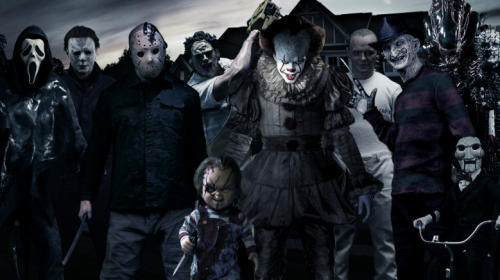

LOS ANGELES — While renowned primarily for its late 20th-century classics, such as “Halloween” and “Friday the 13th,” the horror genre has a rich and historical lineage. Originating in the 1890s with the inaugural horror film “The House of the Devil,” the genre has since drastically evolved, emphasizing supernatural themes during the Literary Years spanning from the 1900s to the ‘20s. In the Golden Age of Horror, roughly spanning from 1920 to the 1930s, the film industry witnessed a prolific output from studios, producing enduring classics, like “The Mummy” and “Nosferatu.”
Following the 1960s, there was a surge in demand among American audiences for slasher horror films, resulting in a proliferation of low-budget productions within the genre. There were, however, just a few critically acclaimed films produced in this era — most notably “The Night of the Living Dead.” Remarkably, this film was created for a mere $100,000 yet managed to gross approximately $300 million.
During the 1970s, a new subgenre emerged: the slasher film, which depicts a relentless killer pursuing a group of individuals through varying, inventive tactics. Many attribute the origins of this subgenre to the 1974 classic, “The Texas Chainsaw Massacre.” Although studios produced many of these films, only a few became cult classics and spawned long-running franchises of their own.
Despite the widespread success of slasher films, the horror genre experienced a decline in the 2000s, largely due to numerous disappointments with CGI-driven monster movies; even considering the meteoric rise of the zombie subgenre.
There is currently a growing sense of pessimism surrounding the horror genre, as many argue it is made up of predominantly sequels and remakes. With the release of “Saw X,” “Scream VI,” “The Nun II,” and “Insidious: The Red Door” in the past few years, it seems the genre has finally exhausted original concepts.
Although there are considerable remakes and new installments of franchises, the horror genre continues to offer compelling and distinct films that delve into nuanced themes such as grief, loss, isolation, and abandonment. Films such as “Talk to Me,” “Hereditary,” and “Peal” provide beacons of hope for the genre and demonstrate the nuances that can exist in horror, and showcase the depth and complexity that can be found within horror storytelling.
Over the past few years, there has been a noticeable surge in the inclusion of political commentary and social allegories within horror films. Rather than relying solely on supernatural elements and jump scares, studios have turned to supplying the rising demand for social commentary in horror films — a trend largely attributed to Jordan Peel’s “Get Out.” The genre is progressively becoming more focused on discussing topics of social justice, relating to racial inequality, the pitfalls of capitalism, and political corruption.
Throughout the decades, the horror genre has evolved from haunted castles to biting political and social commentary. While the horror genre may have its highs and lows, its resilience and ability to adapt ensure its continued relevance and impact in Hollywood. As filmmakers continue to push boundaries and explore new territories, the future of horror promises to be both thrilling and thought-provoking, offering audiences an exciting journey into the unknown.